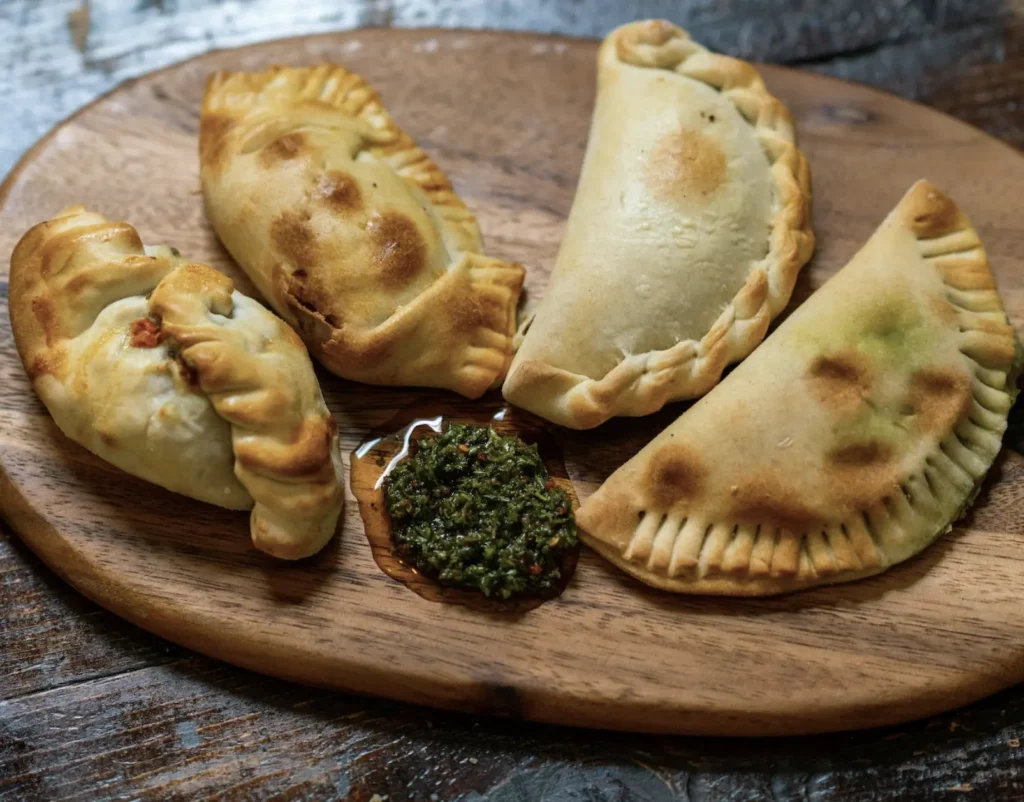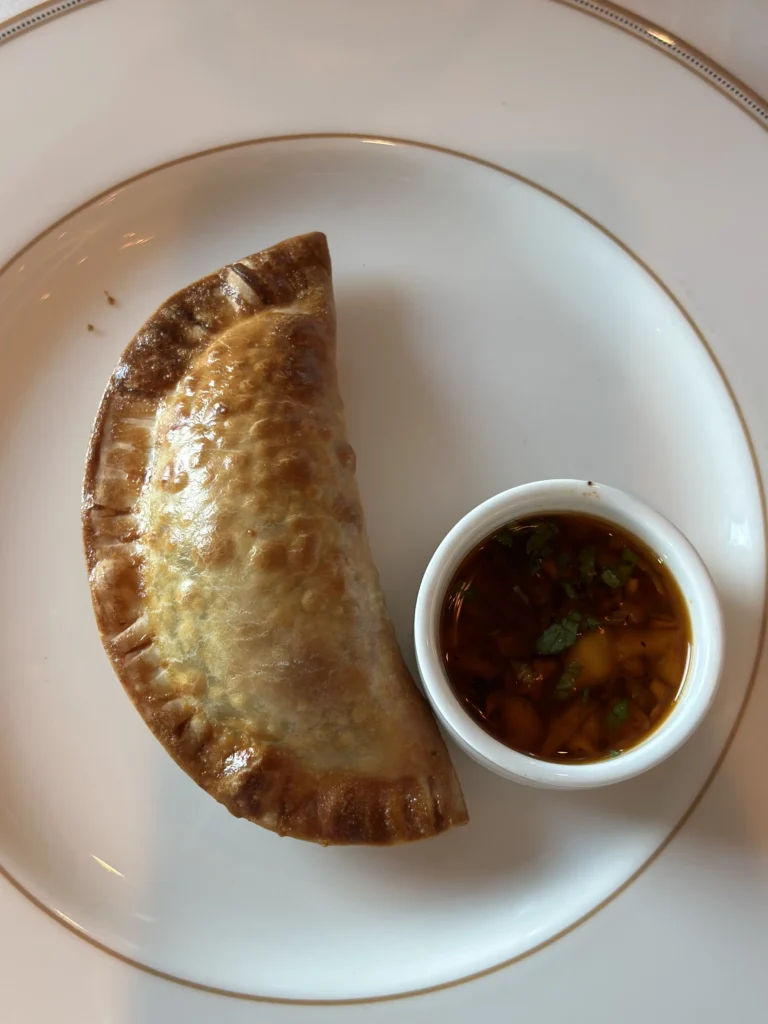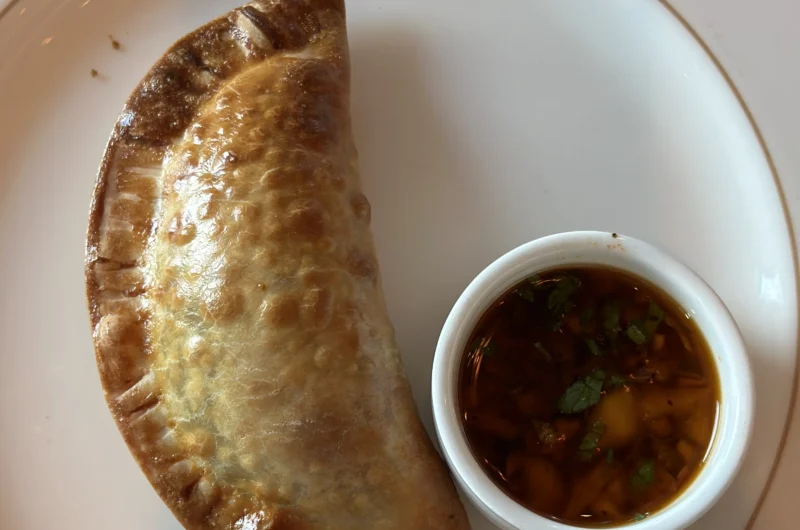Tropical Tastebud Tour: An Introduction to Dominican Street Food
Have you ever tasted authentic Dominican Republic cuisine?! Its flavor, spices, and colors are so unique to this tropical island nation known for its pristine white sand beaches, from Punta Cana to Puerto Plata. But beyond the coastlines, the streets of the Dominican Republic are bustling with mouthwatering aromas that tickle the taste buds. Santo Domingo and other cities are dotted with street vendors, each offering their own delicious Dominican street food, a testament to the nation’s culinary history.
In this post, we’ll look at the 10 most popular dishes in Dominican street food and share a recipe for the best empanadas ever!
In Latin American countries, street food is the heart and soul of the culture. However, the Dominican Republic holds a special place in the hearts of many for its unique blend of flavors. As you walk the streets, from the capital city of Santo Domingo to the coastal town of Boca Chica, you’ll find a medley of traditional Dominican food, from hearty stews to fried delicacies, all waiting to be savored.
These popular Dominican street foods are a blend of the island’s rich history, with influences from Puerto Rico, New York, and even the Middle East.

Photo Credit: Daniel Torobekov
For those embarking on cultural trips to this beautiful island nation, you’ll be welcomed with open arms and an open menu. Every bite tells a story!
Fried Delight: The Irresistible Tostones
Green plantains, those unripe cousins of the banana, are a staple in many Latin street food dishes. But in the Dominican Republic, they take center stage in the form of tostones. These crispy, flat discs of fried green plantains are a popular dish, often served as a side dish with a sprinkling of salt or dipped in tomato sauce. For many, they’re the epitome of Dominican street food, echoing the sounds of sizzling stalls and happy hours spent munching on these delights.
However, creating the perfect toston isn’t just about frying a slice of plantain. It’s an art. The green plantains are peeled, sliced, and fried once before being smashed into small discs and fried again, resulting in a crispy exterior and a tender interior.
Whether you’re in a local restaurant in Santo Domingo or trying your hand at making them at home, pair these with some pollo guisado (chicken stew) or simply with some ketchup – and you’re in for a treat.
Now, while tostones might remind some of the french fries found in the United States, their taste and texture are uniquely Dominican. They’ve become such a staple that you’d be hard-pressed to find a single Dominican restaurant – be it in Puerto Rico, New York, or the island nation itself – that doesn’t serve these golden delights. And for good reason!
Wrap and Roll: The Classic Chimichurri Burger
No, we’re not talking about the green sauce from Argentina. The Dominican chimichurri burger, often shortened to “chimi burger”, is a street food staple that has won the hearts of many, both locals and tourists. Served in a soft bun, the ground beef patty is seasoned with a mix of Dominican spices, including garlic powder and lime juice, and is typically topped with cabbage and a special sauce that’s a blend of mayo, ketchup, and orange juice.
The origins of the chimi burger are debated, but many believe it’s the Dominican version of the Lebanese kibbeh, thanks to the Lebanese influence in the city of San Pedro de Macoris. Others think it’s a purely Dominican invention, inspired by the burgers from the United States but with a unique island twist.
Whatever its history, today, it’s one of the most popular Dominican foods, especially on Saturday nights when food trucks line the streets, serving up this delicious treat.
While the chimi burger is a star on its own, it’s often accompanied by a side of french fries or tostones, making it a complete meal. And if you’re looking to wash it down, there’s nothing better than a cold glass of morir soñando – a sweet concoction of milk and orange juice. With every bite of a chimi burger, you’re diving deep into the culinary heritage of the Dominican Republic, where tradition meets innovation.
Empanadas Everywhere: The Pocket of Happiness
Empanadas, those delightful pockets of dough filled with various ingredients, are found in many Latin American countries. However, in the Dominican Republic, they take on a flavor of their own. Filled with ground meat, often beef or chicken, and seasoned with Dominican spices, they’re a testament to the island’s blend of cultures. The use of spices, from garlic powder to red onion, and the technique of folding the wheat flour dough, can be traced back to both Spanish and Middle Eastern influences.
But what makes Dominican empanadas truly stand out are their fillings. Beyond the traditional ground beef, you might find them stuffed with cheese, sweet potatoes, or even the national dish of the Dominican Republic, the hearty sancocho de siete carnes (seven-meat stew). And while empanadas are often associated with special occasions, in the Dominican Republic, they’re an everyday treat, thanks to the street vendors who serve them hot and fresh.
If you ever find yourself on the tropical shores of Punta Cana or Puerto Plata, make sure to grab an empanada or two. They’re the perfect snack, a blend of Dominican cuisine’s rich history and the innovation of street vendors. And with every bite, you’re not just tasting food; you’re tasting a piece of the Dominican soul.
For the Sweet Tooth: Delectable Dominican Desserts
While savory dishes might dominate the Dominican street food scene, there’s no shortage of sweet treats to satisfy your cravings. One of the most beloved desserts is “Dulce de Coco”, a concoction of grated coconut cooked in coconut milk and sugar, often served in small balls. It’s a testament to the island’s abundance of fresh fruits, especially coconut, and its African heritage.
Another favorite, especially during Lent, is “Habichuelas con Dulce”, a sweet cream made from red beans, coconut milk, sweet potatoes, and spices. This traditional dish might sound unusual, but for many Dominicans, it’s a taste of childhood and special occasions. And if you’re looking for something to cool down with, “Helado Bon” is the way to go. This ice cream, found all over the streets of the Dominican Republic, offers a range of tropical fruit flavors, from passion fruit to orange.
Dominican desserts are a blend of the island’s resources, from tropical fruits to the use of spices introduced by the Spanish. Whether you’re savoring a spoonful of arroz con leche (rice pudding) or biting into a piece of bulgur wheat cake, you’re indulging in centuries of culinary tradition, all wrapped up in a sweet package.
Here’s a chart of some of the most popular foods enjoyed for breakfast, lunch, and dinner:
| Dominican Street Food | Description | Typical Ingredients |
|---|---|---|
| Pescado Frito | Fried fish, a beachside favorite | Fish, lime, garlic |
| Langosta | Caribbean lobster | Lobster, butter, herbs |
| Mangu | Mashed plantains | Plantains, onions, oil |
| Yaniqueques | Crispy fried dough | Flour, water, salt |
| Avena Caliente | Warm oatmeal drink | Oats, milk, cinnamon |
| Chimichurris | Dominican burgers | Ground beef, bread, mayo |
| Tostones | Flattened fried plantains | Plantains, salt |
| Mofongo | Mashed plantains with pork cracklings | Plantains, garlic, pork |
Little Foodies’ Favorites: Kid-Friendly Dominican Snacks
It can be joyful to explore the diverse world of Dominican street food with your little ones! Their eager eyes, ready to be delighted by the vibrant colors and tastes of Dominican cuisine. First up, we have the visually appealing Charamicos. These are essentially small balls made primarily from sweet potatoes and bulgur wheat.
They’re fried to perfection and served with a side dish of tomato sauce. The soft texture and slightly sweet taste make them a favorite among kids, and hey, they’re a nutritious treat too.
Next, let’s talk about Yaniqueques. These are a popular dish, especially among the streets of Santo Domingo. Shaped like the beautiful Dominican flag, they’re a flaky pastry filled with ground beef or sometimes even fish. Often compared to empanadas from other Latin American countries, Yaniqueques have their distinct Dominican twist. They’re served hot, straight from the frying pans of local street vendors, and are often paired with a side of french fries or green plantains.
And who can resist the joy of making a Paleta!. These ice pops, made from fresh fruits like passion fruit, are a tropical delight. The streets of the Dominican Republic are filled with vendors, especially in tourist hotspots like Punta Cana and Puerto Plata, offering these refreshing treats. On a warm day, there’s nothing better than sharing one of these cool treats with your child (or anyone, for that matter!).
Sea Breeze Bites: Coastal Street Foods
Dominican Republic, this island nation, is surrounded by pristine white sand beaches. It’s no wonder that seafood plays a significant role in the Dominican street food culture. The scent of fresh fish being grilled or fried wafts through the coastal areas, especially popular spots like Boca Chica.
One such delicacy is Pescado Frito. Fresh fish, seasoned with a mix of lime juice, garlic powder, and other spices, is deep-fried to golden perfection. It’s a common sight to see families gathered around street vendors, enjoying this dish with a side of white rice or boiled root vegetables.
Lambi, a type of seafood stew, has its roots in African and Spanish colonizers’ culinary traditions. It’s a hearty blend of various seafood types, slow-cooked with coconut milk, tomato sauce, and a mix of tropical island spices. Lambi is a testament to the delicious Dominican food culture that beautifully marries the flavors of the sea with the richness of coconut and spices.
For those looking for a dish with a bit of a kick, Chivo Guisado Picante is the answer. Though not strictly seafood, this spicy goat meat stew is a must-try for anyone visiting the coastal areas. With its use of spices and slow-cooked method, it’s a taste sensation that lingers on your palate long after you’re done.
Munching Morning, Noon, and Night: The All-Day Dominican Snack
The versatility of Dominican street food is truly impressive. From morning till night, there’s always something delicious to munch on. For breakfast, Mangú is a popular dish. This delightful preparation of boiled green plantains, mashed with olive oil, is often paired with fried cheese, invoking the essence of the traditional Dominican food culture.
As the day progresses, street vendors start preparing Pastelitos and Kipes. The Dominican version of the Lebanese Kibbeh, Kipes are made from bulgur wheat and ground meat. They are fried until crispy and are a favorite snack, especially during late afternoons. Pastelitos, on the other hand, are flaky pastries filled with different types of meat, cheese, or even vegetables. They’re the Dominican answer to food trucks in the United States.
Nighttime in the Dominican Republic, especially Saturday nights, is a treat for the senses. The air fills with the aroma of Chicharrón. These pork rinds, crispy and seasoned to perfection, are a favorite among locals and tourists alike. Paired with a cold beverage, they’re the perfect end to a day of exploring the myriad flavors of Dominican street food.
Sip and Savor: Dominican Drinks to Accompany Your Street Food
No Dominican street food experience is complete without the right drink to wash it down. Morir Soñando, a delightful blend of orange juice and milk, is a classic Dominican drink. Its name translates to “die dreaming,” and one sip will tell you why. The perfect balance of tart and creamy, it’s a refreshing accompaniment to any meal.
For the coffee lovers, Café Dominicano is a treat. Strong, aromatic, and often sweetened, this coffee is a staple in the Dominican Republic. Whether you’re starting your day with a hearty breakfast or need a mid-day pick-me-up, this coffee, often served in small cups, packs a punch.
Evenings in the Dominican Republic often end with a glass of Mamajuana. This drink, made by steeping rum, red wine, and honey with tree bark and herbs, has a rich folklore associated with it. A sip of this, and you’re transported to the tropical beaches, with the waves lapping at your feet.
From Street to Kitchen: DIY Dominican Street Food
Bringing the flavors of Dominican street food to your kitchen might seem daunting, but with the right ingredients and a bit of passion, it’s entirely doable.
Start with the basics. Stock up on ingredients like green plantains, ground beef, garlic powder, and olive oil. Local restaurants and vendors are always open arms, willing to share tips and tricks that have been passed down through generations.
And, remember that food is as much about the experience as it is about taste. So, whether you’re reminiscing about your trip to the Dominican Republic or planning one, exploring the world of Dominican street food, from the streets of Santo Domingo to your kitchen, is a journey worth taking! Be sure to share this post with other adventurous cooks out there!
FAQs
Why is Dominican Food So Good?
Flavor Fusion: Dominican cuisine is a tantalizing blend of Spanish, African, and Taino influences. The use of fresh, local ingredients like tropical fruits, root vegetables, and seafood creates a unique flavor profile that’s both vibrant and comforting.
Seasoning Secrets: The heart of Dominican flavor lies in its seasoning. Herbs and spices like cilantro, oregano, garlic, and the ubiquitous “sazón” bring dishes to life. This fusion of flavors is what makes Dominican food stand out.
What Do They Call Food in the Dominican Republic?
La Bandera: A traditional meal named “La Bandera” (The Flag) is a staple. It typically includes rice, beans, meat, and salad, representing the colors of the Dominican flag.
Street Eats: In the streets, you’ll hear about “frituras” (fried snacks), “chimichurris” (Dominican burgers), and “tostones” (flattened fried plantains), all integral parts of the local food vocabulary.
What Foods are Punta Cana Known For?
- Pescado Frito: Freshly caught and fried fish, a beachside favorite.
- Langosta: Caribbean lobster, a luxurious treat.
- Mangu: Mashed plantains, often served with onions and fried cheese.
What Do Dominicans Eat for Breakfast?
A Hearty Start: Breakfast in the Dominican Republic often includes:
- Mangu: Mashed plantains, typically topped with red onions and paired with fried eggs, salami, or cheese.
- Yaniqueques: Crispy, fried dough, perfect with coffee.
- Avena Caliente: A warm, cinnamon-spiced oatmeal drink.
Is Mofongo Dominican or Puerto Rican?
Shared Heritage: Mofongo, made from fried plantains mashed with garlic and pork cracklings, is commonly associated with Puerto Rico. However, it’s also a beloved dish in the Dominican Republic, showcasing the shared culinary heritage of the Caribbean islands.
Dominican Twist: In the Dominican Republic, mofongo often features a unique local touch, such as the addition of shrimp or a special sauce.
Dominican Empanadas with Sancocho de Siete Carnes Filling
Course: Dinner, LunchCuisine: Dominican RepublicDifficulty: Medium12
servings30
minutes1
hour30
minutesServe your Dominican empanadas hot, with a side of salsa or a squeeze of lime juice, and enjoy the rich flavors of the Dominican Republic right in your home.
Ingredients
For the Dough:
2 cups of wheat flour
1/4 cup of water (adjust as needed)
1/2 tsp of salt
2 tbsp of butter, melted
1 egg, for egg wash
For the Sancocho de Siete Carnes Filling:
1/4 cup each of seven different types of meat (chicken, beef, pork, goat, sausage, etc.)
1 small red onion, finely chopped
2 garlic cloves, minced
1 tsp of garlic powder
1/2 tsp of ground oregano
1/4 tsp of ground cumin
1/2 cup of root vegetables (like yucca or sweet potatoes), diced
1/4 cup of red beans
Salt and pepper to taste
2 tbsp of olive oil
2 cups of beef or chicken broth
Directions
- For the Dough:
- In a large mixing bowl, combine the wheat flour and salt.
- Gradually add the water and melted butter, mixing until a dough forms.
- Knead the dough on a floured surface until it becomes smooth and elastic.
- Divide the dough into 12 equal portions and roll each into a ball.
- Using a rolling pin, roll out each ball into a flat circle, about 6 inches in diameter.
- For the Filling:
- In a large pot, heat the olive oil over medium heat. Add the red onion and garlic, sautéing until translucent.
- Add the meats to the pot, browning them slightly.
- Stir in the garlic powder, ground oregano, cumin, salt, and pepper.
- Add the diced root vegetables and red beans, mixing well.
- Pour in the beef or chicken broth, ensuring the ingredients are covered.
- Let the stew simmer for about 45 minutes to an hour, or until the meat is tender and the flavors melded. If it becomes too dry, add more broth or water as needed.
- Once done, let the sancocho cool and shred the meats.
- Assembling the Empanadas:
- Preheat your oven to 375°F (190°C).
- Place a spoonful of the sancocho filling in the center of each dough circle.
- Fold the dough over to form a half-moon shape, pressing the edges to seal.
- Use a fork to crimp the edges, ensuring they’re sealed tightly.
- Brush the tops of the empanadas with a beaten egg to give them a golden finish.
- Place the empanadas on a baking sheet lined with parchment paper.
- Bake for 20-25 minutes or until they’re golden brown.
Craving more delicious recipes? Try these: Cajun Salmon Alfredo

